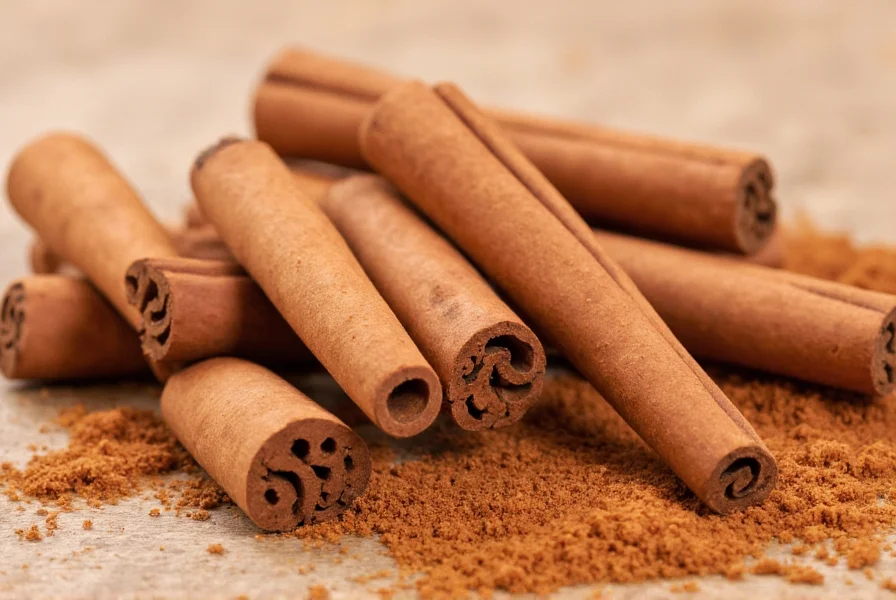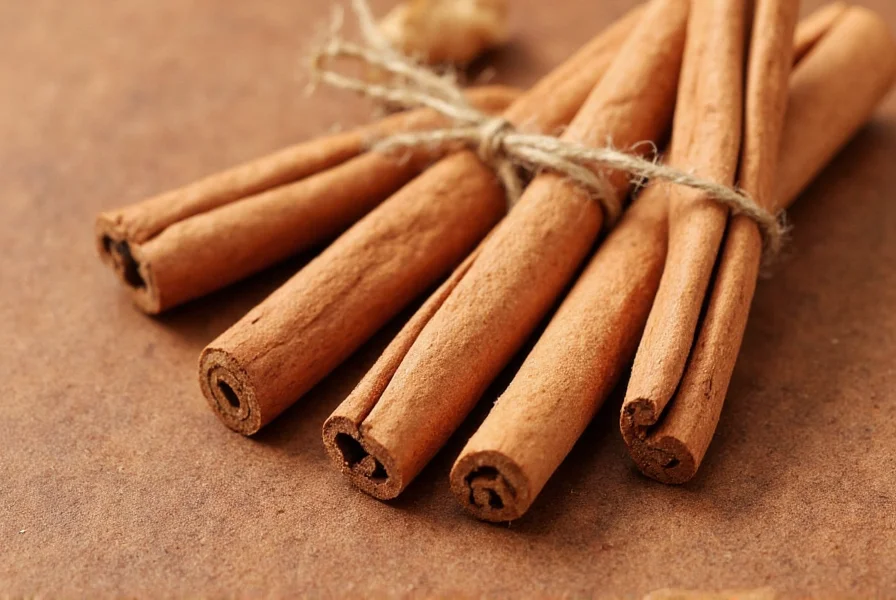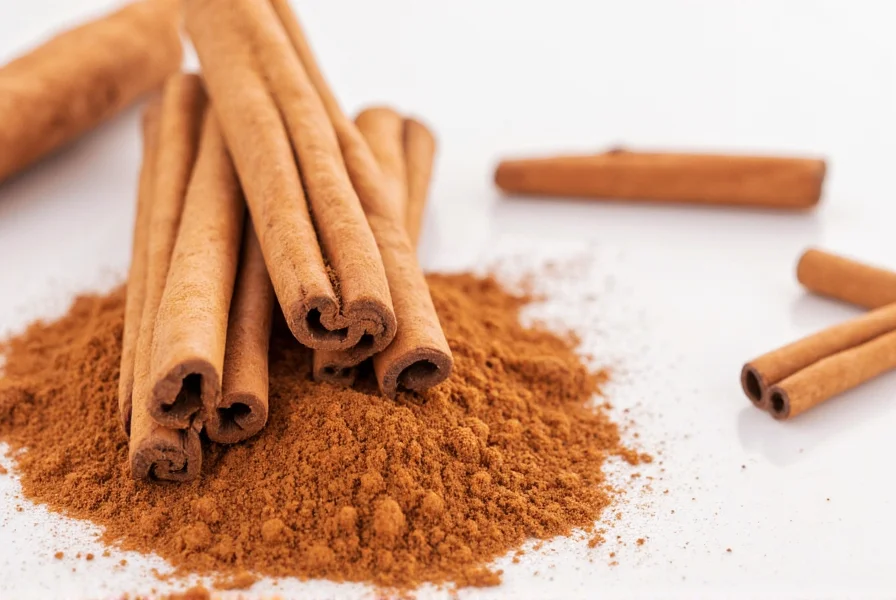For those exploring natural approaches to blood sugar management, cinnamon has gained attention as a potential complementary option. This comprehensive analysis examines what current research actually says about cinnamon's effects on blood glucose, separating scientific evidence from popular claims.
The Science Behind Cinnamon and Blood Sugar Regulation
Cinnamon contains bioactive compounds like cinnamaldehyde, polyphenols, and proanthocyanidins that may influence glucose metabolism through several mechanisms. Research suggests these compounds might improve insulin sensitivity by enhancing insulin receptor activity, slowing gastric emptying, and inhibiting enzymes that break down carbohydrates. Some studies indicate cinnamon may also stimulate glucose uptake in cells and reduce inflammation markers associated with insulin resistance.
These potential mechanisms have prompted numerous clinical investigations into whether incorporating cinnamon into daily routines could support blood sugar management, particularly for those with prediabetes or type 2 diabetes.
What Research Says About Cinnamon and Blood Glucose
Multiple clinical trials and meta-analyses have examined cinnamon's effects on blood sugar markers. The results show promise but with important limitations:
| Study | Participants | Cinnamon Dose | Duration | Key Findings |
|---|---|---|---|---|
| Allen et al. (2013) | 102 type 2 diabetes patients | 1-6g daily | 90 days | Significant reduction in fasting glucose (29 mg/dL) |
| Mang et al. (2006) | 79 type 2 diabetes patients | 1-3g daily | 4 months | 18-29% reduction in fasting glucose |
| Khan et al. (2003) | 60 type 2 diabetes patients | 1-6g daily | 40 days | 18-29% reduction in fasting glucose |
| Leach & Kumar (2012) meta-analysis | 543 participants across 10 studies | 120mg-6g daily | 4-18 weeks | Modest improvement in fasting glucose (-0.49 mmol/L) |
A comprehensive 2019 meta-analysis published in Clinical Nutrition reviewed 11 randomized controlled trials involving 692 participants. The analysis concluded that cinnamon supplementation significantly reduced fasting blood glucose levels compared to control groups, with an average reduction of approximately 13.84 mg/dL. However, the researchers noted substantial heterogeneity between studies and called for more standardized research.
Ceylon vs. Cassia: Important Distinctions for Blood Sugar Management
Not all cinnamon is created equal when considering blood sugar effects. Two primary varieties exist:
- Cassia cinnamon (most common in supermarkets) - Contains higher levels of coumarin, which may cause liver issues in large doses
- Ceylon cinnamon ("true" cinnamon) - Contains significantly less coumarin but may have slightly different bioactive compound profiles
Research on blood sugar effects has primarily used Cassia cinnamon, though some newer studies are examining Ceylon. For regular consumption, many healthcare providers recommend Ceylon due to its lower coumarin content, especially for those with liver concerns or taking medications.

Practical Considerations for Using Cinnamon
Based on current evidence, here's what those interested in cinnamon for blood sugar management should know:
- Dosage: Most studies showing benefits used 1-6 grams daily (approximately 1/4 to 1 1/2 teaspoons), with 1-3 grams being the most common effective range
- Timing: Taking cinnamon with carbohydrate-containing meals may maximize potential blood sugar benefits
- Consistency: Effects appear to build over weeks of regular use rather than providing immediate results
- Realistic expectations: Cinnamon's effects are modest compared to pharmaceutical interventions
For those with diabetes, cinnamon should be viewed as a potential complementary approach rather than a replacement for prescribed medications. Always consult with your healthcare provider before making significant changes to your diabetes management plan.
Limitations and Important Caveats
Several important limitations exist in the current research on cinnamon and blood sugar:
- Study durations are typically short (4-18 weeks), so long-term effects remain unclear
- Many studies have small sample sizes
- Significant variation exists in cinnamon types, doses, and study methodologies
- Effects appear more pronounced in those with higher baseline blood glucose levels
- Cinnamon does not replace the need for medication in diagnosed diabetes
Individuals with diabetes should never discontinue prescribed medications in favor of cinnamon supplementation. Those taking blood sugar-lowering medications should exercise caution, as cinnamon could potentially enhance these effects and lead to hypoglycemia.

Conclusion: A Modest Tool in Blood Sugar Management
Current evidence suggests cinnamon may offer modest benefits for blood sugar control, particularly as part of a comprehensive approach that includes diet, exercise, and medical treatment when necessary. While not a miracle cure, incorporating reasonable amounts of cinnamon into your diet appears safe for most people and may provide supplementary support for glucose regulation. As research continues to evolve, more definitive recommendations may emerge regarding optimal types, doses, and usage protocols for those interested in natural approaches to blood sugar management.
Frequently Asked Questions
How quickly does cinnamon lower blood sugar?
Research suggests cinnamon's effects on blood sugar develop gradually over several weeks of consistent daily use. Most studies showing benefits had participants take cinnamon for 4-18 weeks. You shouldn't expect immediate blood sugar reductions after a single dose, as the potential benefits appear to build over time with regular consumption.
What's the best type of cinnamon for blood sugar control?
Both Ceylon and Cassia cinnamon have shown potential blood sugar benefits in research, but Ceylon cinnamon is generally recommended for regular consumption due to its significantly lower coumarin content. Cassia contains higher levels of coumarin, which may cause liver issues with prolonged high-dose use. For those specifically concerned about blood sugar management, either type may be effective, but Ceylon offers a better safety profile for ongoing use.
Can cinnamon replace diabetes medication?
No, cinnamon should never replace prescribed diabetes medications. Research shows only modest effects on blood sugar levels, far less than pharmaceutical interventions. For those with diagnosed diabetes, cinnamon may potentially serve as a complementary approach alongside prescribed treatments, but never as a substitute. Always consult your healthcare provider before making any changes to your diabetes management plan.
How much cinnamon should I take daily for blood sugar benefits?
Most clinical studies showing blood sugar benefits used between 1-6 grams of cinnamon daily (approximately 1/4 to 1 1/2 teaspoons), with 1-3 grams being the most commonly effective range. Starting with 1 gram (about 1/4 teaspoon) daily and gradually increasing to 3 grams may help assess tolerance. Higher doses don't necessarily provide additional benefits and may increase potential side effects, especially with Cassia cinnamon.











 浙公网安备
33010002000092号
浙公网安备
33010002000092号 浙B2-20120091-4
浙B2-20120091-4